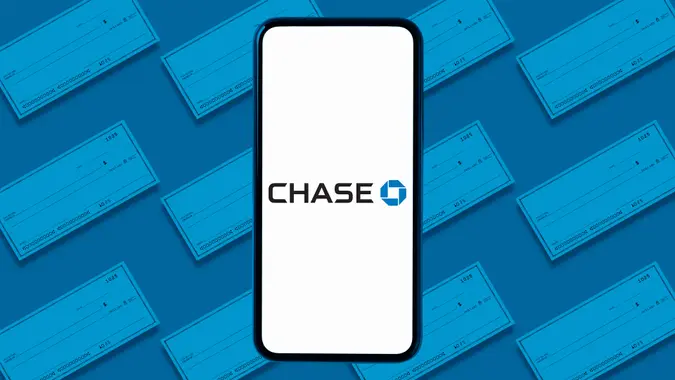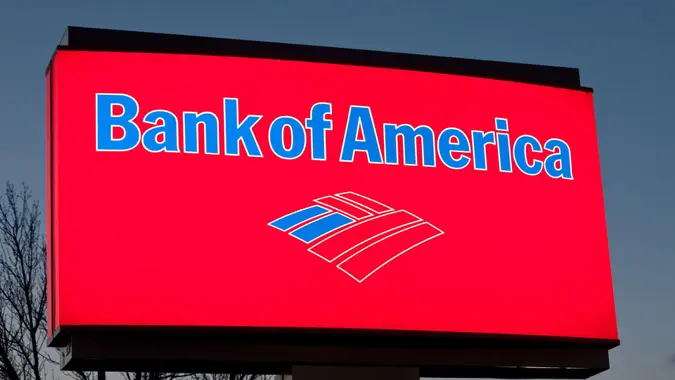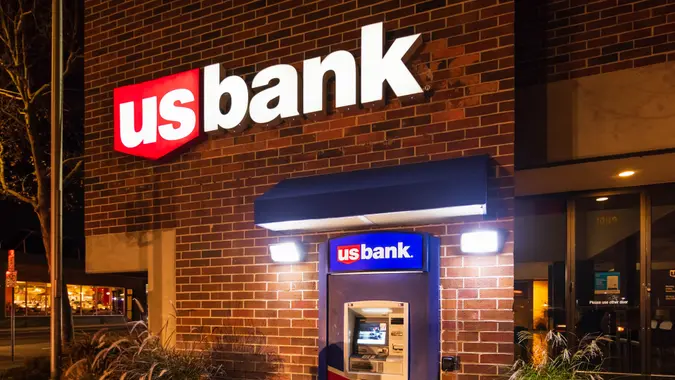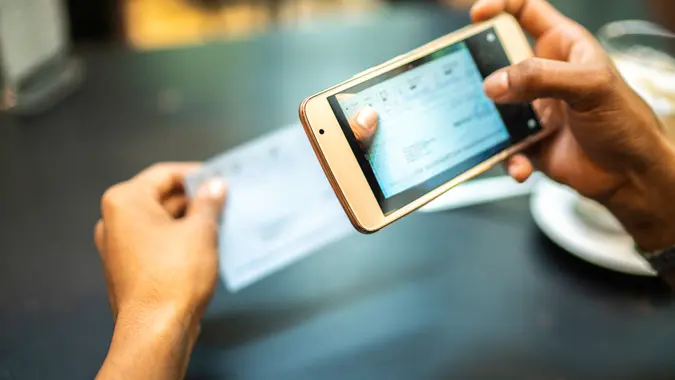Can You Pay Bills at an ATM?

Commitment to Our Readers
GOBankingRates' editorial team is committed to bringing you unbiased reviews and information. We use data-driven methodologies to evaluate financial products and services - our reviews and ratings are not influenced by advertisers. You can read more about our editorial guidelines and our products and services review methodology.

20 Years
Helping You Live Richer

Reviewed
by Experts

Trusted by
Millions of Readers
In today’s fast-paced world, people constantly on the move seek convenient solutions for managing their finances. One key question arises: “Can I pay bills at an ATM?” For those looking to streamline their financial tasks with ease, keep reading to uncover the potential of ATMs in simplifying bill payments.
Can You Pay Bills at an ATM?
Yes, you can pay bills at an ATM. Many ATMs, especially those associated with major banks provide the functionality to pay specific bills. This service can be a lifesaver when you’re in a hurry and need to meet payment deadlines. ATMs offering this service can also give you a dated receipt, serving as proof of your payment.
How Does ATM Bill Payment Work?
Paying bills at an ATM is a straightforward process. Typically, you need to have an account with the bank that operates the ATM. Here’s a general step-by-step guide:
- Insert your card: Begin by inserting your debit or credit card into the ATM.
- Select the bill pay option: Navigate the ATM menu to find the bill payment option.
- Enter bill details: You may need to enter the payee details, account number and the amount you wish to pay.
- Confirm and complete the transaction: After verifying the information, confirm the payment. The ATM will process the transaction and provide a receipt.
Benefits of Using ATMs for Bill Payments
Exploring the advantages of ATM bill payments can reveal why this method is becoming increasingly popular among users. Here are some key benefits:
- Convenience: Paying bills at an ATM can be done at any time, making it a convenient option for those with busy schedules.
- Speed: It’s a quick way to make payments, especially compared to mailing a check or visiting a service provider.
- Receipts for records: ATMs provide receipts, which are useful for keeping track of payments and for proof in case of any disputes.
Factors To Consider
While using ATMs for bill payments offers convenience, there are several factors to keep in mind for a smooth experience.
- Not all ATMs offer this service: While many do, it’s not a universal feature. Check with your bank to see if their ATMs have bill pay capabilities.
- Service limitations: Some ATMs might have restrictions on the types of bills you can pay or may limit transactions to specific service providers.
- Security: Always be cautious when entering sensitive information at an ATM and ensure no one is watching as you input your details.
Final Take
Paying bills at an ATM can be a convenient and time-saving feature offered by many banks. It’s a testament to how banking services are evolving to meet the needs of modern consumers. However, it’s important to be aware of the limitations and security aspects while using this service. For specific details about bill payment options, it’s always a good idea to reach out to your bank’s customer service or visit their website. This way, you can ensure that your financial transactions are both convenient and secure.
FAQ
Here are the answers to some of the most frequently asked questions about paying bills.- Can you pay bills at an ATM?
- Yes, many ATMs offer the functionality to pay bills, allowing you to handle various payments conveniently.
- What is the best way to pay bills?
- The best way to pay bills often depends on your personal financial situation and the options available to you. Automated online payments or setting up direct debits can be efficient and help avoid late fees. Other reliable methods include using bill pay services through your bank, mobile apps or even in-person payments for immediate processing.
- How do I pay my bills if I have no money?
- If you find yourself unable to pay your bills due to a lack of funds, consider a few steps:
- Reach out to your bill providers to explain your situation -- many companies offer hardship programs or payment extensions.
- Prioritize your bills, focusing on the most essential services first.
- Explore emergency financial assistance programs in your community.
- Look for temporary ways to increase your income, like part-time jobs or freelance work.
- Carefully manage your remaining funds, cutting non-essential expenses where possible.
- If you find yourself unable to pay your bills due to a lack of funds, consider a few steps:
Editor's note: This article was produced via automated technology and then fine-tuned and verified for accuracy by a member of GOBankingRates' editorial team.
 Written by
Written by 























